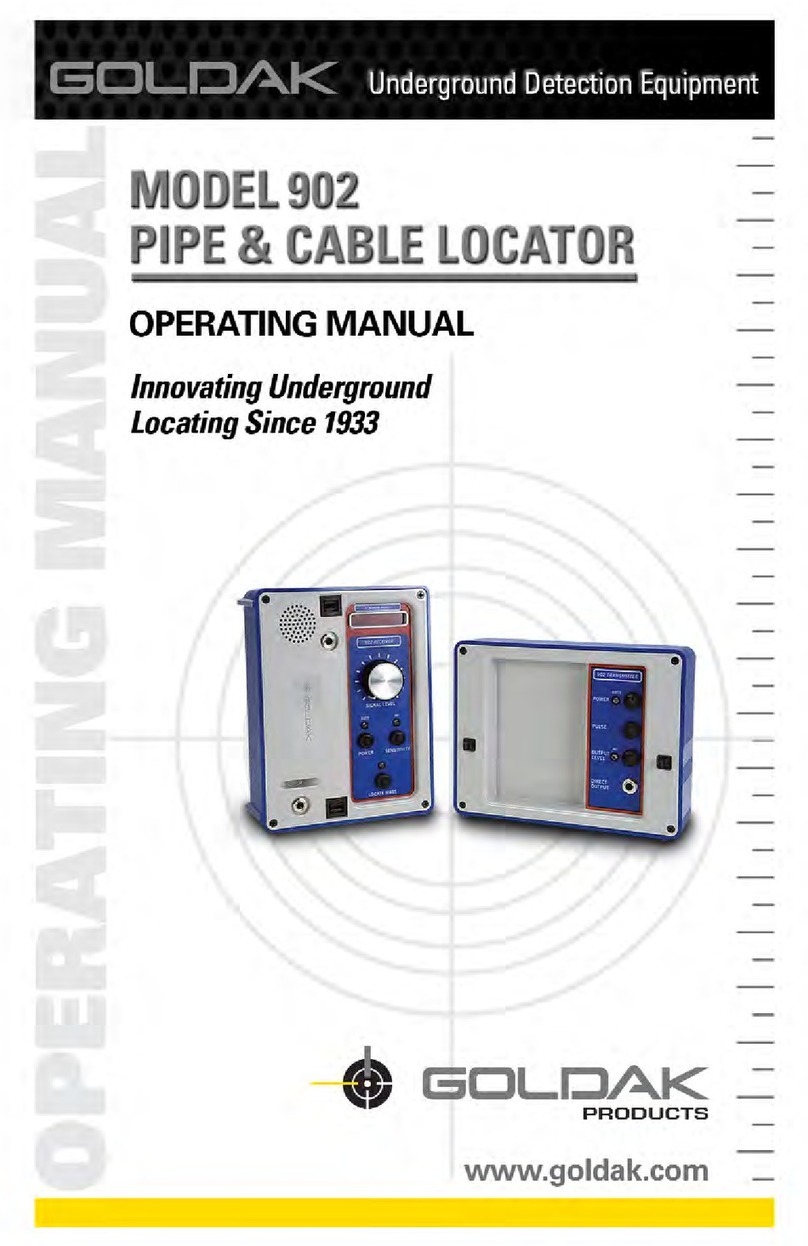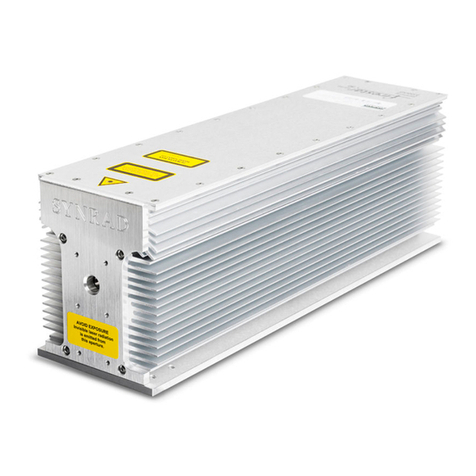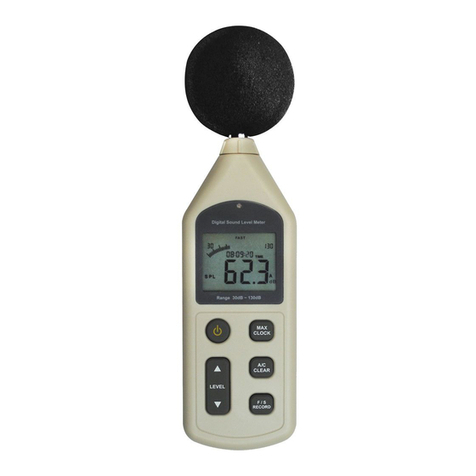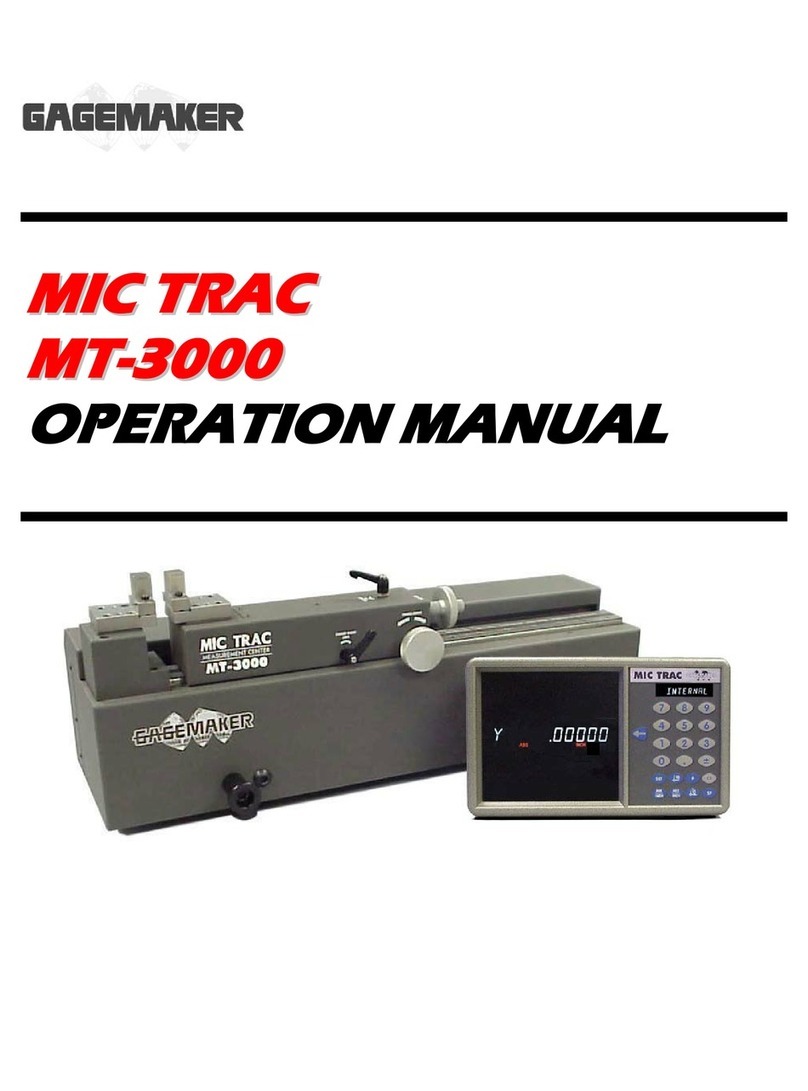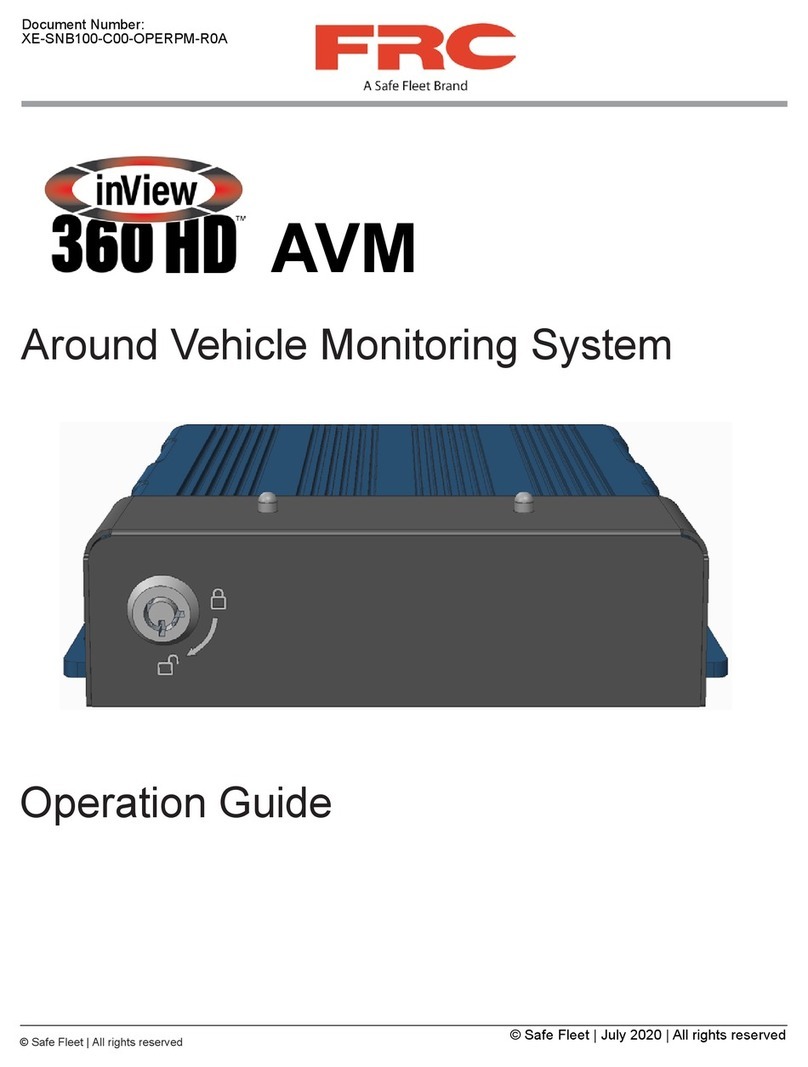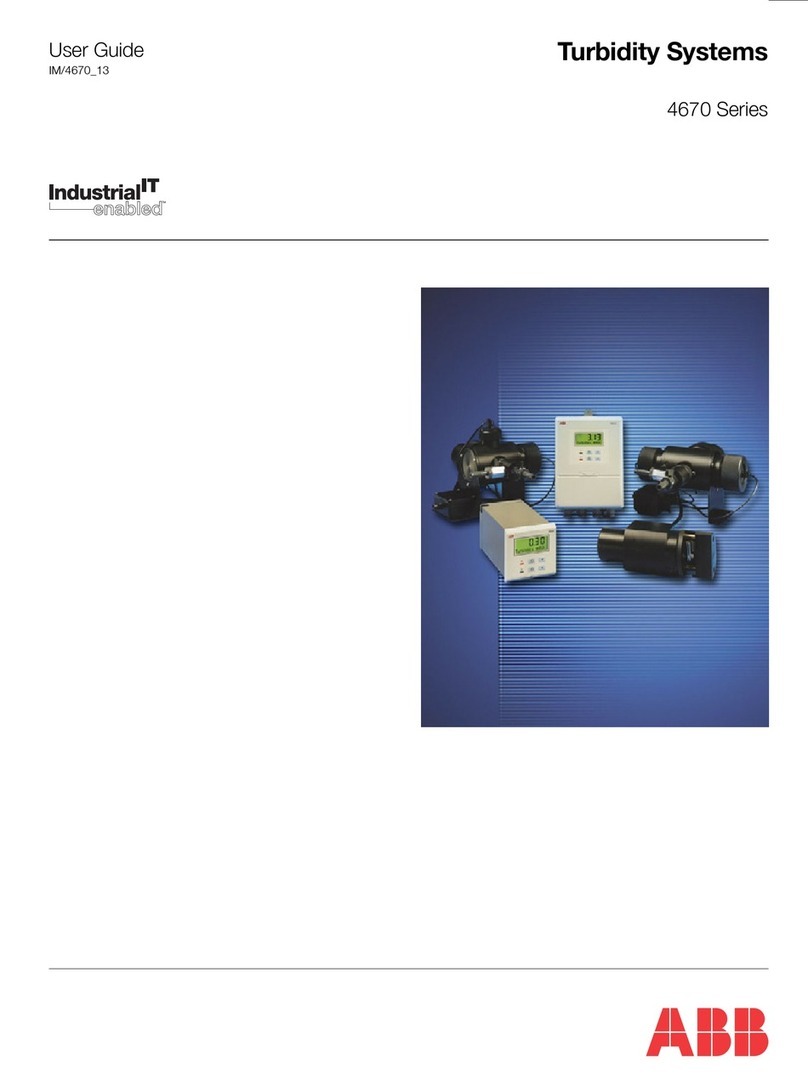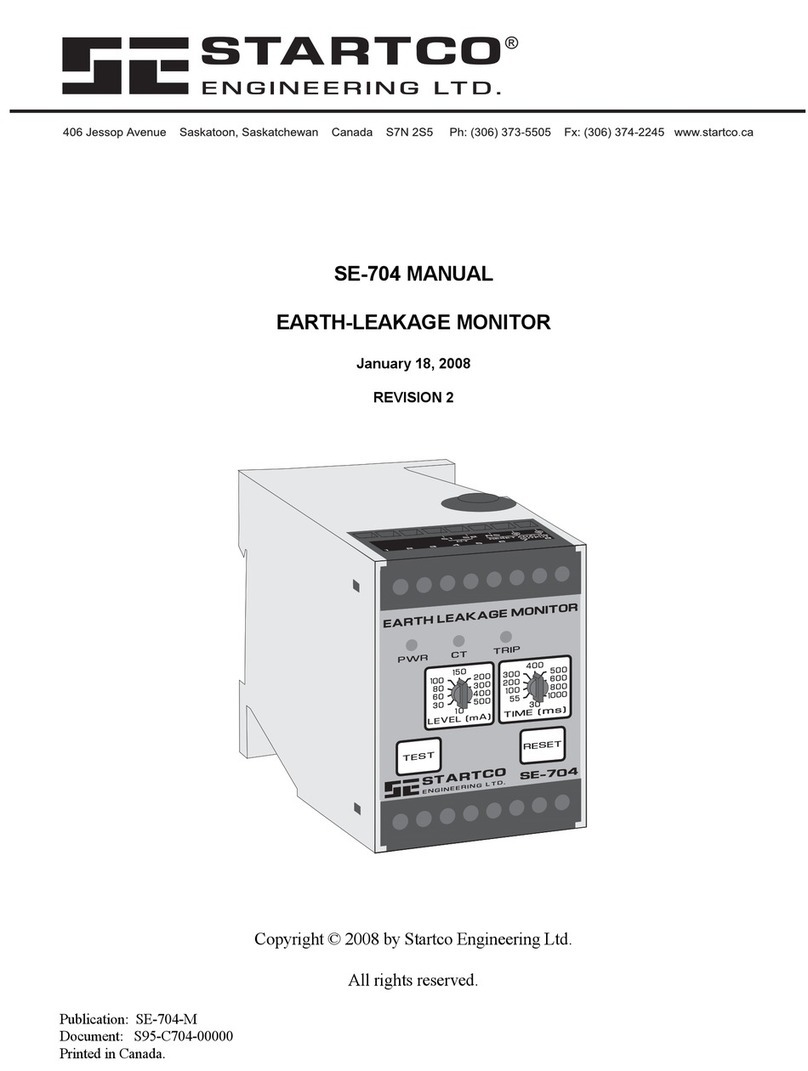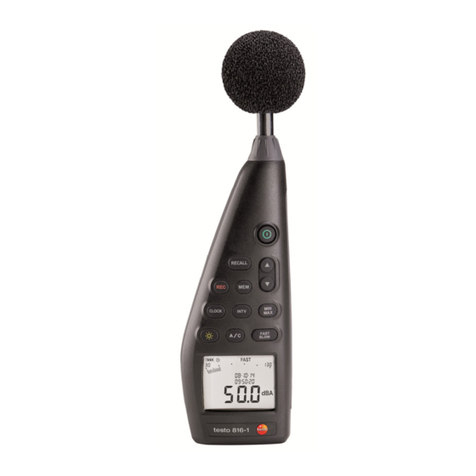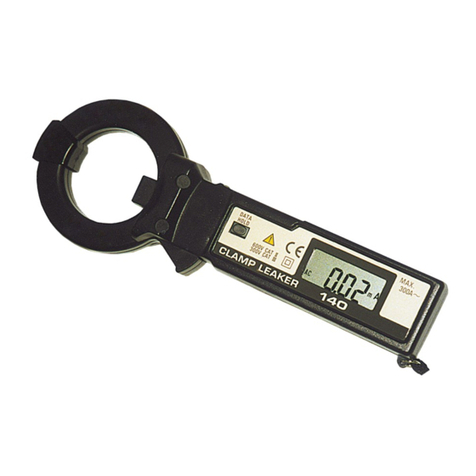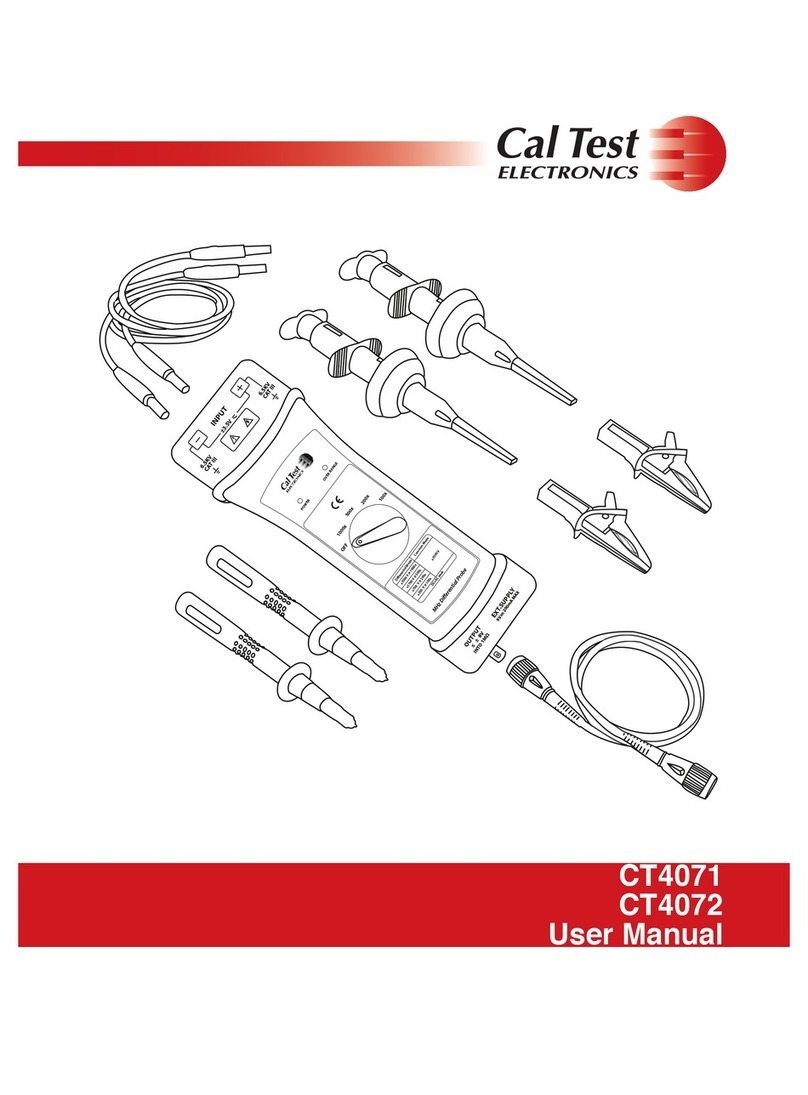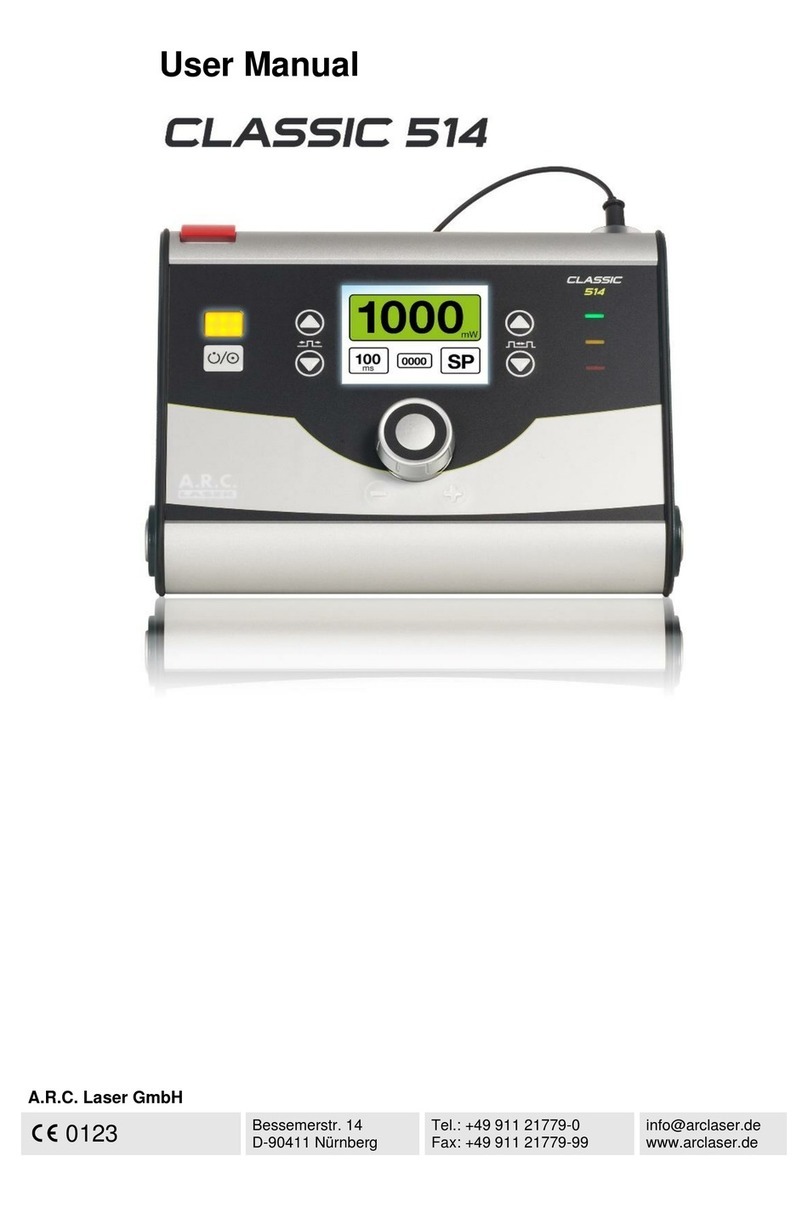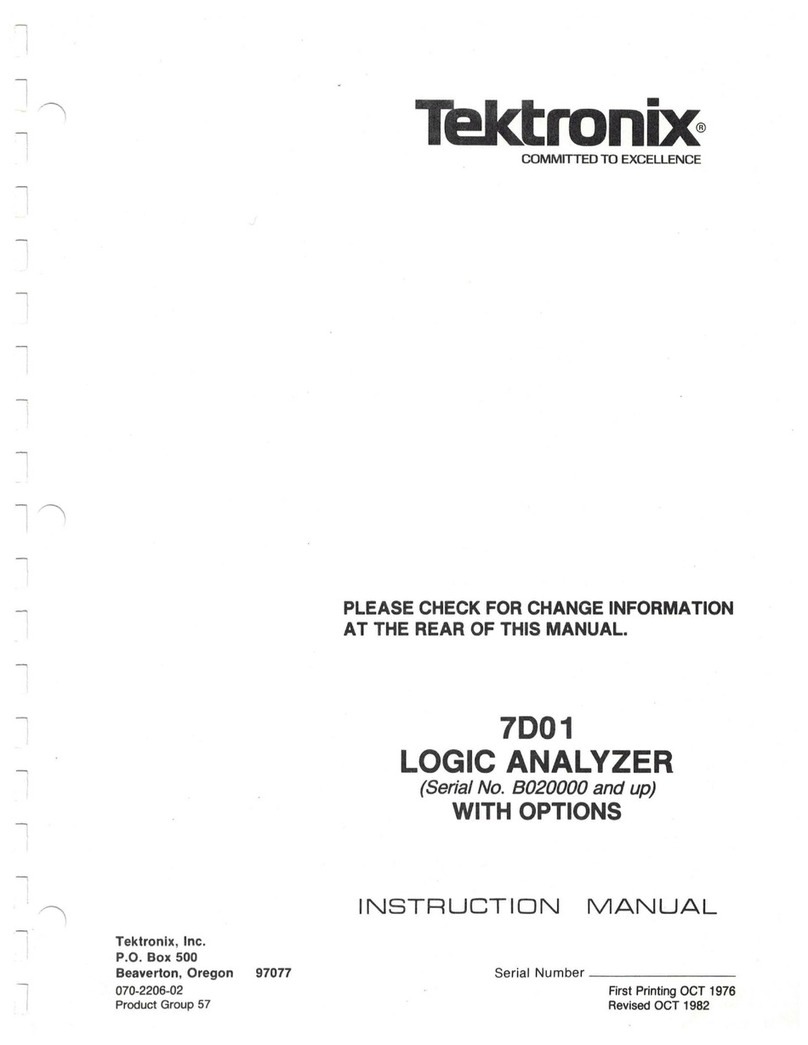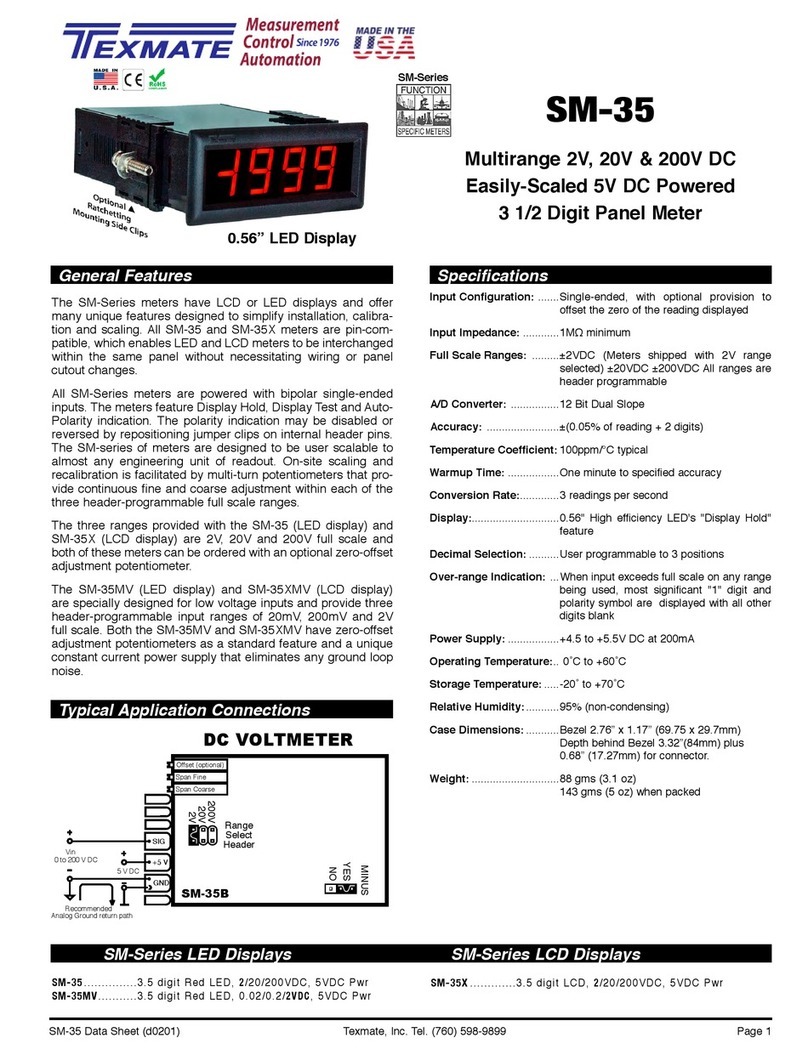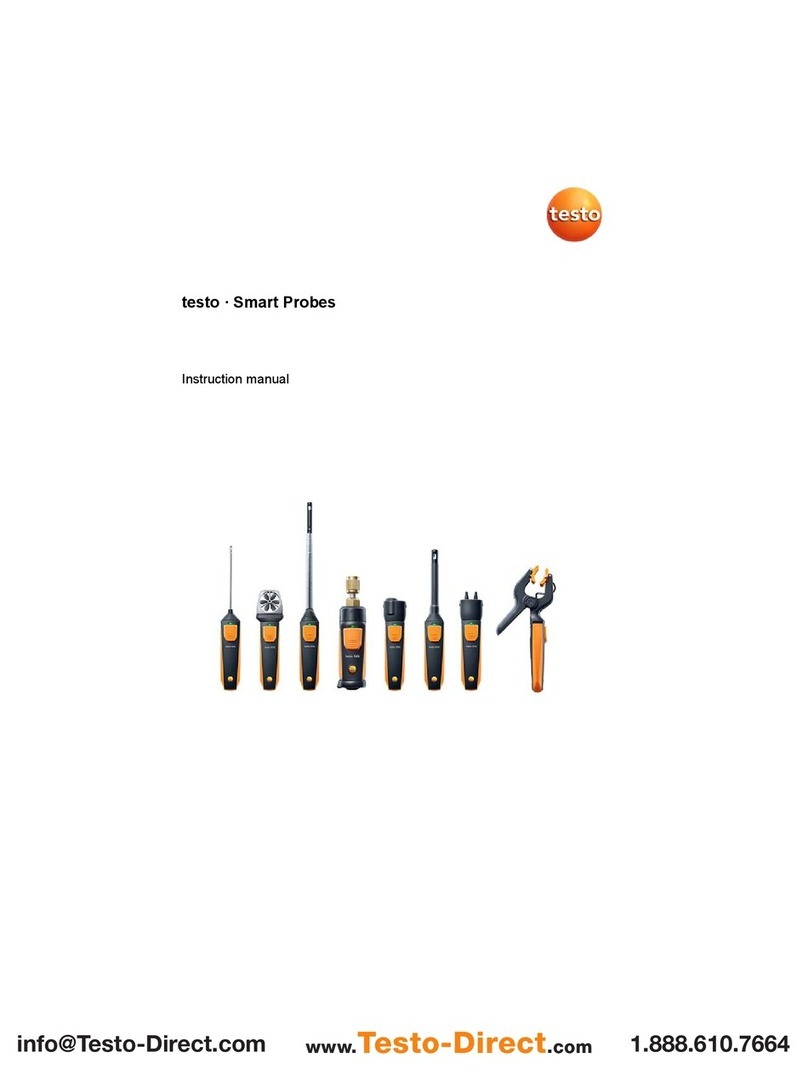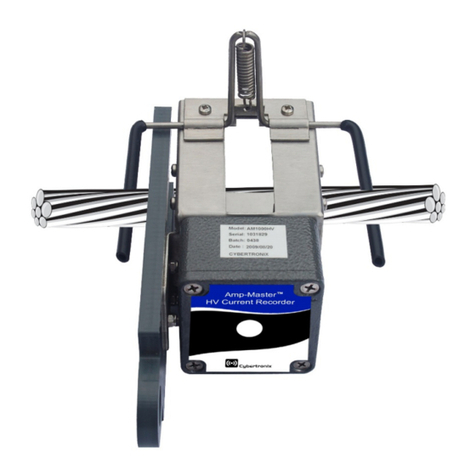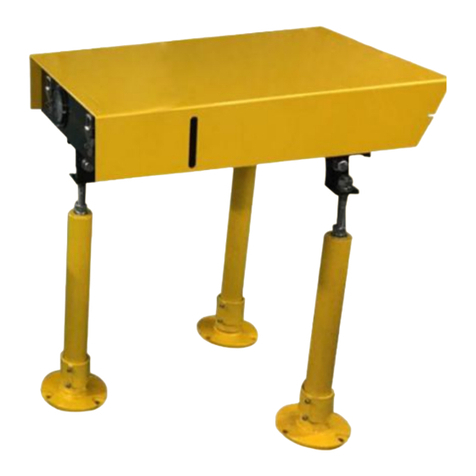Goldak 720 User manual


CONTENTS PAGE NO.
A. General Description . . . . . . . . . . . . . . . . . . . . . . . .1
B. Operating Procedures . . . . . . . . . . . . . . . . . . . . . . .3
1) Mechanical Adjustment . . . . . . . . . . . . . . . . . .3
2) Electronic Adjustment . . . . . . . . . . . . . . . . . . .3
C. Notes and Suggestions . . . . . . . . . . . . . . . . . . . . .6
D. Maintenance . . . . . . . . . . . . . . . . . . . . . . . . . . . . . .7
E. Servicing . . . . . . . . . . . . . . . . . . . . . . . . . . . . . . . . .8

A) General Description:
The Model 720 Valve Locator is a portable, solid-state, electronic
detection instrument. It is used by municipalities, water and gas
utilities, contractors, maintenance people, and others to locate valve
caps, boxes, valve risers, manhole covers, etc. The major parts of
the Model 720 are: (see Figure 1)
1. The Detection Head
2. The Head Swivel
3. The Telescoping Handle
4. The Control Box with:
a. Built-In Speaker
b. Indicating Meter, Signal Strength and Battery Condition
c. Sensitivity Control/On-Off Switch
d. Battery Test Push-Button
e. Headphone Jack
5. Pistol Grip
6. Battery Supply
Model 720/820-S Valve Locators
1

The Model 820-S Valve Locator is a simplified version of the 720
with the same general detection capabilities. It uses a fixed-
length (non-telescoping) handle and on the control box uses only
a speaker and a sensitivity control. The 720/820-S DETECTION
HEAD is a sealed metallic foils to either the top or bottom surface
of the detection head. The star decal on the detection head is the
center of sensitivity when sweeping an area to detect valve caps,
etc.
The detection head SWIVEL and the TELESCOPING HANDLE
(720 only) are mechanical fittings to enable the operator to place
the instrument in a comfortable position for searching.
On the control box, the SENSITIVITY, “ON-OFF” KNOB is the
key to the successful operation of the instrument. It is used to
turn the instrument on, to control the sensitivity, and to compen-
sate for uneven terrain, mineralized ground, etc.
The SPEAKER (720 only) produces a tone that enables the
operator to pinpoint buried manhole covers, valve caps, etc.
(The optional headphones on the 720 do the same thing.)
The METER on the 720 has several functions. It is an indicator to
assist the operator in properly adjusting the instrument. It quickly
“tells” the operator if a buried valve cap or other metallic object
has been detected, and in conjunction with the BATTERY TEST
BUTTON it shows the condition of the batteries.
The HEADPHONE JACK on the control panel of the 720 is used
if headphone operation is preferred. When the pone plug is
pushed into the jack, the speaker circuit is opened automatically
which gives the operator a privacy feature. The instrument sensi-
tivity and operating characteristic are the same in either case. The
PISTOL GRIP is used, of course, to carry the locator. The BAT-
TERY SUPPLY consists of two 9-volt batteries mounted inside
2

the pistol grip. They can be replaced by simply removing the sin-
gle screw and the plate at the bottom of the pistol grip. Views of
the control panels for the 720 and 820-S instrument are shown in
Figure (1).
B) Operating Procedures:
1. Mechanical Adjustment
a) Loosen the knurled nut (720 only) on the telescoping
handle and extend the detection head to a comfortable
carrying position with the arm extended as shown in
Figure 2A.
b) Keep the extension arm vertical and set the detection
head flat and as low to the ground or pavement as is
practical for sweeping the area.
2. Electronic Adjustment
a) First test the condition of the battery supply. Turn the
unit “ON” by turning the SENSITIVITY/ON-OFF
control know clockwise unit until it clicks on. Now
push the BATTERY TEST PUSH-BUTTON and
observe the METER. A reading anywhere in the green
shows that the battery supply is OK.
b) With the unit “ON” and with the DETECTION HEAD
away from any mental objects slowly turn the control
clockwise. For the first one-quarter of a turn there will
be no tone from the speaker and the meter will stay at
zero. As the control is advanced a full tone or signal
will be heard from the speaker. The meter needle will
move quickly to the full-scale position as the speaker
and meter always track together.
Model 720/820-S Valve Locators
3

c) To “tune” the instrument for maximum sensitivity, set
the detection head flat and as low to the ground as is
practical (see section B1-b on page 2).
d) The correct operating point is with no tone (meter set
at zero) but it must be at the edge of the signal. In
other words, no sound, but any clockwise turn of the
control will immediately bring in the signal.
It should be mentioned that if an attempt is made to
locate a valve cap or some other buried metal object
with the sensitivity Control too low or too far into the
“dead” area, then the instrument will be very weak and
insensitive. Of course, if the control is advanced too far
during the initial tuning and a signal is constantly pres-
ent, then there will be no charge when the detection
head is carried over a manhole cover, buffalo box or
valve cap.
e) IMPORTANT: Remember; tune (or adjust) the instru-
ment with the detection head at the distance above
the ground that it is to be carried. Do not hold it a foot
or two above the ground while turning and then lower
it to the operating position. This will reduce the sensi-
tivity or cause false signals.
f) Now sweep the area keeping the detection head flat
and at a constant distance above the ground. (See
Figure 2A)
4

g) Follow the same rules when attempting to spot an
electrical outlet box or other metal objects behind
walls: (See Figure 2B)
1) Set the detection head close to the wall and parallel
to it.
2) Find the “dead” area and very slowly turn the knob
clockwise until the signal is just ready to appear.
3) Now “sweep” the wall keeping the distance from
it the same.
Model 720/820-S Valve Locators
5

h) To localize or pinpoint a valve cap or other object that
has been detected and is producing a full signal, slowly
decrease the sensitivity (turn control counter-clockwise)
without moving or removing the detecting head. At
some point the tone will disappear. Now turn it back
up only enough to bring the signal back in. Slowly
move the detection head away. The signal is weak now
(because the sensitivity control is turned down) so very
quickly as the head is moved away the signal will
disappear. Eventually as the head is moved back and
forth, while reducing the sensitivity control, a point will
be reached where the signal “peaks” or is very narrow.
This is the pinpointing operation and the metal object
being detected will be directly under the star decal on
the detection head.
C) Notes and Suggestions:
1. Remember when initially tuning the instrument to try to
find a spot that is relatively free of metal. If it is difficult to
adjust and signals seem to be very strong, move away a
few feet and try it again.
2. If the terrain is uneven and the detection
head must be raised and lowered during the sweep
operation be aware of the fact that false signals may
occur. Particularly if the instrument is very sharply tuned.
To solve this problem it is suggested that the detection
head be raised to clear the terrain as the area is covered.
This will result in a slight loss of sensitivity.
6

3. During the tuning procedure the operator is actually
compensating for mineralization or conductivity of the
earth at that particular point. Different areas have different
amounts of mineralization and must be “tuned out” at
each locating site. If this were not so, then the instru-
ments could be tuned and locked at the factory. On some
rare cases the conductive mineral content of the earth is
so high that the sensitivity control must almost be turned
off to find the dead spot for proper tuning. This, of course,
will reduce sensitivity.
4. Check the battery supply frequently. The test can be done
quickly and easily while the instrument is being used.
Even though tuning is usually possible, low battery volt-
ages will result in low sensitivity.
D) Maintenance:
1. Both the 720 and 820-S employ solid-state circuitry and
they use no adjustable tuning coils so routine mainte-
nance is limited to occasional battery replacement. Two
transistor-type 9-Volt batteries are used and Figure 3
shows where they are located and how they are mounted.
Since the cost is very low it is our suggestion that both
batteries be replaced at the same time. Remove the small
screw holding the plate in place at the bottom of the
pistol grip. Disconnect the snaps, discard the old batter-
ies, install the new ones and reassemble.
Model 720/820-S Valve Locators
7

E) Servicing:
Should the Model 720 or the Model 820-S Valve Locator
require repair or servicing aside from normal product mainte-
nance, we suggest that you contact the factory at the
following address:
Goldak, Inc.
15835 Monte Street, Unit 104
Sylmar, CA 91342
Phone: 818-367-0149
Fax: 818-833-7694
8

We will inform you of any local repair stations in your area
or advise you to ship the instrument directly to the factory.
If you ship the product, we suggest you:
a) Pack the instrument carefully and secure.
b) Include any accessory items normally used with the
instrument.
c) Include a note with the instrument stating the nature
of the problem(s) you have encountered in using the
instrument.
d) Include a contact name, telephone number,
and fax number.
Model 720/820-S Valve Locators
9

This manual suits for next models
1
Table of contents
Other Goldak Measuring Instrument manuals
